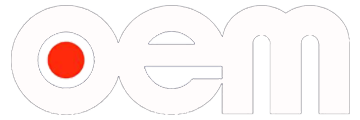There are many reasons for the deformation of aluminum parts, which are related to materials, part shapes, production conditions, and so on. There are mainly the following aspects: deformation caused by internal stress of the blank, deformation caused by cutting force, cutting heat, and deformation caused by clamping force.
First, less processing deformation process measures
1. Reduce the internal stress of the blank
The natural stress of the blank can be partially eliminated by natural or artificial aging and vibration treatment. Pre-processing is also an effective process. For the blank of the big head of the fat head, due to the large margin, the deformation after processing is also large. If the excess part of the blank is processed in advance and the remaining amount of each part is reduced, not only the processing deformation of the subsequent process can be reduced, but also a part of the internal stress can be released after being pre-processed for a certain period of time.
2, improve the cutting ability of the tool
The material and geometric parameters of the tool have an important influence on the cutting force and the cutting heat. The correct selection of the tool is essential for reducing the deformation of the part.
(1) Reasonable selection of tool geometry parameters.
1 Front angle: Under the condition of maintaining the strength of the cutting edge, the front angle is appropriately selected. On the one hand, the sharp cutting edge can be ground, and the cutting deformation can be reduced to make the chip removal smooth, thereby reducing the cutting force and the cutting temperature. Never use a negative rake cutter.
2 Back angle: The size of the back angle has a direct influence on the flank wear and the quality of the machined surface. Cutting thickness is an important condition for selecting the back angle. In roughing, due to the large feed rate, heavy cutting load, large heat generation, and good heat dissipation conditions of the tool, the back angle should be smaller. When finishing milling, the edge is required to be sharp, the friction between the flank and the machined surface is reduced, and the elastic deformation is reduced. Therefore, the relief angle should be selected to be larger.
3 helix angle: In order to make the milling smooth and reduce the milling force, the helix angle should be as large as possible.
4 lead angle: Appropriate reduction of the lead angle can improve the heat dissipation conditions and reduce the average temperature of the processing area.
(2) Improve the tool structure.
1 Reduce the number of milling cutter teeth and increase the chip space. Due to the large plasticity of the aluminum material, the cutting deformation during processing is large, and a large space for chipping is required. Therefore, the bottom radius of the chip groove should be large, and the number of teeth of the milling cutter is small.
2 fine grinding teeth. The roughness value of the cutting edge of the cutter is less than Ra = 0.4 um. Before using a new knife, you should use a fine stone to grind gently in front of and behind the teeth to eliminate burrs and slight zigzag remaining when sharpening the teeth. In this way, not only the cutting heat can be reduced but also the cutting deformation is relatively small.
3 Strictly control the wear standard of the tool. After the tool wears, the surface roughness of the workpiece increases, the cutting temperature increases, and the workpiece deformation increases. Therefore, in addition to the selection of high-abrasion tool materials, the tool wear standard should not be greater than 0.2mm, otherwise it will easily lead to built-up edge. When cutting, the temperature of the workpiece should not exceed 100 °C to prevent deformation.
3. Improve the clamping method of the workpiece
For thin-walled aluminum workpieces with poor rigidity, the following clamping methods can be used to reduce distortion:
1 For thin-walled bushing parts, if the three-claw self-centering chuck or the collet chuck is used to clamp from the radial direction, once the workpiece is loosened after machining, the workpiece is inevitably deformed. At this time, a method of pressing the axial end face with good rigidity should be utilized. To position the inner hole of the part, a threaded threading mandrel is made and inserted into the inner hole of the part, and a cover plate is pressed against the end surface and then tightened with a nut. When the outer circle is machined, the clamping deformation can be avoided, and satisfactory machining accuracy can be obtained.
2 When processing thin-walled thin-plate workpieces, it is best to use vacuum suction cups to obtain a uniform distribution of clamping force, and then to process with a small amount of cutting, which can prevent deformation of the workpiece well.
In addition, a packing method can also be used. In order to increase the process rigidity of the thin-walled workpiece, the medium can be filled inside the workpiece to reduce the deformation of the workpiece during the clamping and cutting process. For example, a urea melt containing 3% to 6% of potassium nitrate is poured into the workpiece, and after the processing, the workpiece is immersed in water or alcohol, and the filler can be dissolved and poured out.
http://www.chinamfgshop.com/aboutus/
■ Core business CNC milling & turning for the global market.
■ Well known DIN-2768-1-fine & DIN-2768-1-medium tolerance standard.
■ Weekly report with a picture for production manufacturing.
■ DFM & Mold flow before start making.
■ FAI samples inspection report.
■ Work a reasonable and reliable solution for you.
■ Flexible trade term such as EXW, FCA, FOB, CIF, and DDU, etc.
■ Express shipping services, such as FedEx, UPS, TNT, DHL, USPS, EMS ETC.
■ 15+ years CNC milling, turning & molding

